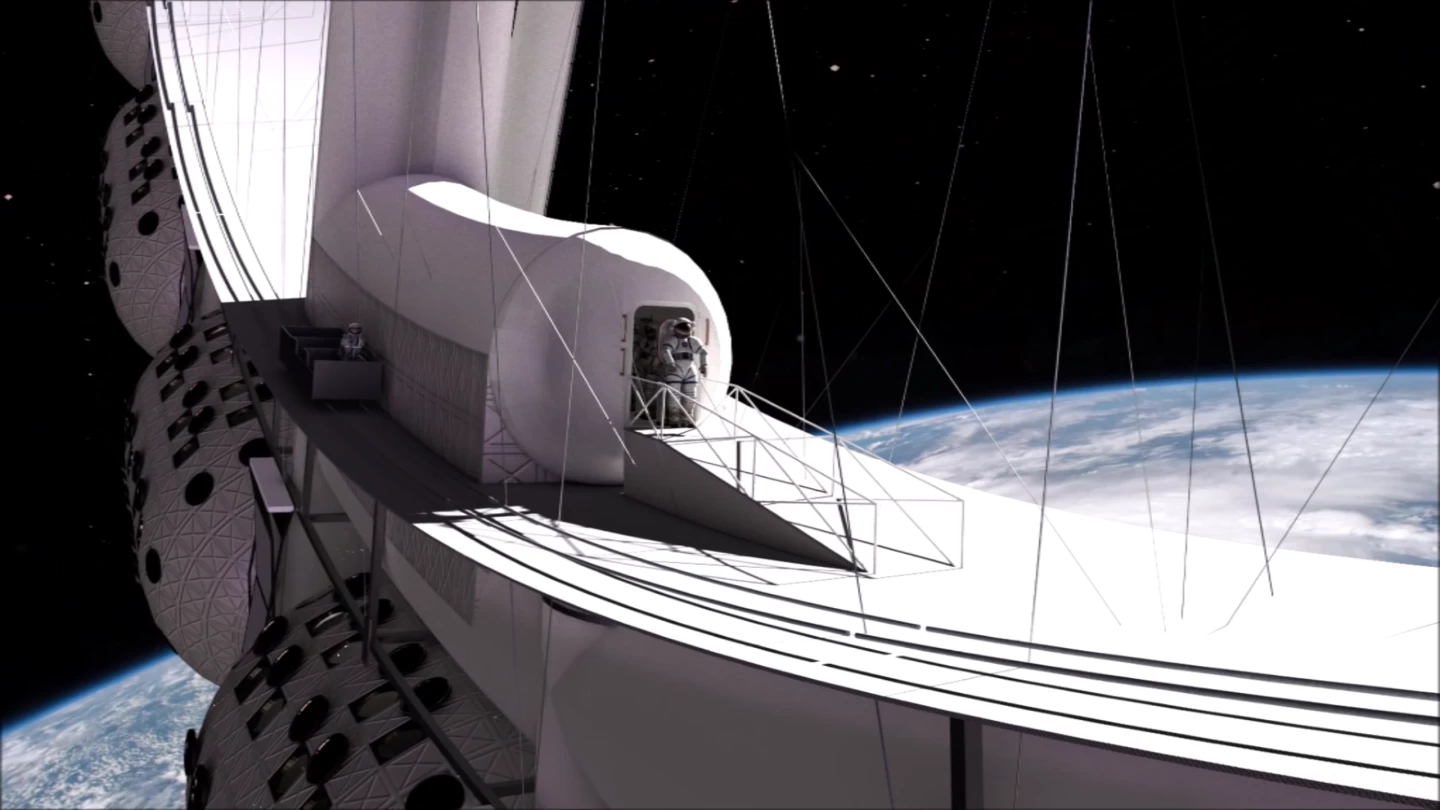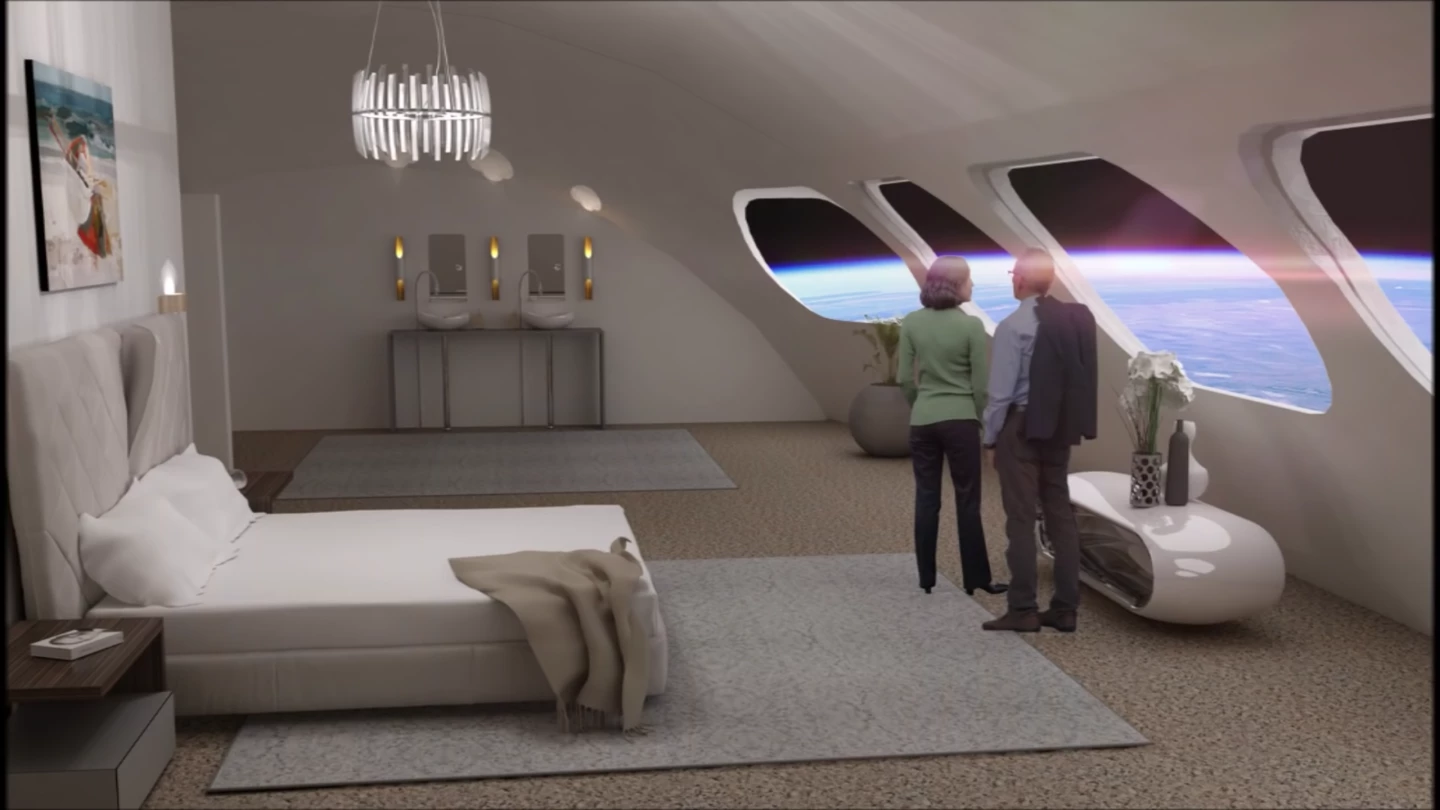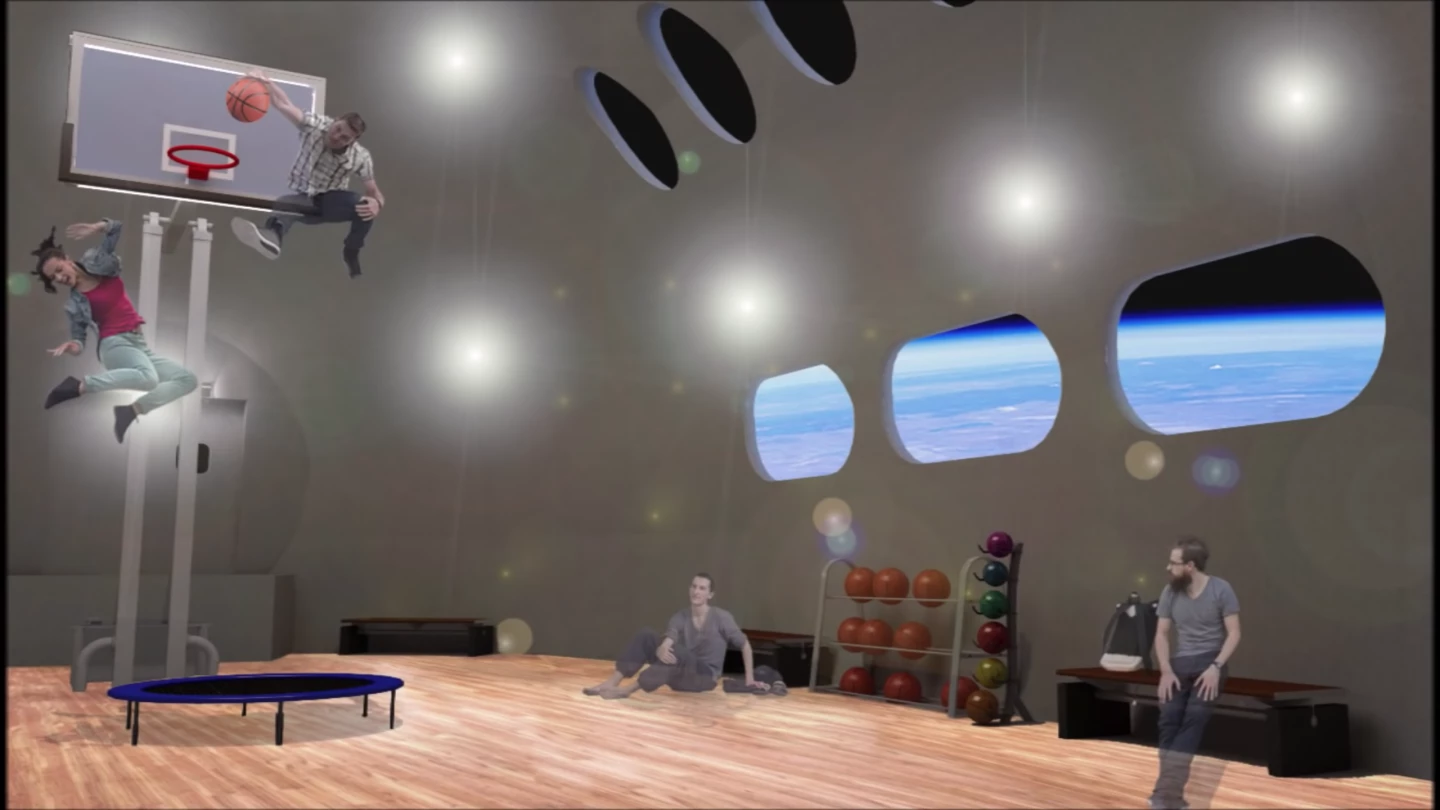California's Orbital Assembly Corporation reckons it will soon have the solar system's first luxury space hotel open in orbit, offering spacewalks, Beyonce concerts and fine dining to space tourists at US$5 million for three and a half days.
The company plans to take advantage of plummeting space launch costs – which SpaceX's Starship could bring down to a few hundred dollars a kilogram – to build a giant circular space station, some 700 feet (212 m) in diameter, assembled in orbit by semi-autonomous and remote controlled robots. A hub-and-spoke wheel design similar to the ones Wernher Von Braun wrote about in the 1950s, the Voyager Space Station (VSS) would rotate slowly, at one and a quarter revolutions per minute, to provide artificial gravity about as strong as the moon's.
The VSS plans to accommodate around 100 crew, as well as 300 visitors – be they tourists, business travelers, scientists, astronauts just passing through or long-term residents. It would be powered by solar and supplied from Earth.

And yes, this will be no ISS; the Orbital Assembly team is going for the space equivalent of luxury. "Fundamentally, Voyager is a spacecraft," said Orbital CTO Dr. Tom Spilker during a recent fundraising presentation, "but not like any that have come before it. We don't want the Voyager experience to be like being in an attack submarine... We're architecting for comfort, especially for first-time tourists with no astronaut training."
Forget your squeezy ISS food tubes, the VSS aspires to fine dining and five-star entertainment. "You’re going to have the top chefs making really, really good food," Orbital CEO John Blincow told the Washington Post. "And when you pay $5 million to go someplace, it’s not going to be burgers and fries ... We want to have Sting come up and play, and Beyoncé. There’ll be two shows every night. … That’s part of the entertainment package."
Well, that and the view of mother Earth turning slowly below you, a sight that might even tear one's eyes away from a pop star. Or the ability to pop outside for a spacewalk, which is also on the cards.

The team wants to start assembling the VSS, in space, around 2026 – but first, it plans to put a small-scale 40-meter (130 ft) "Gravity Ring" in orbit to prove its semi-automatic robotic construction tools, which will handle the job of assembly in zero-gravity.
How much is this all going to cost? "We do have confidence," said Chief Scientist and CVO Dr. Jeff Greenblatt, "that because we're approaching this in a very modular fashion, our fabrication and assembly costs will be a lot lower than historical. So ... depending on launch costs – and it could be on the low end – we're definitely looking in the tens of billions of dollars for the full construction of the station. And I'll just leave it there, because it's still a bit speculative at this point."
For context, the 22-year-old International Space Station is widely regarded as the most expensive thing constructed in history, costing somewhere around US$150 billion and capable of accommodating seven people in microgravity.
But don't worry, says Orbital, the VSS will have an opportunity to take a stab at a "serviceable obtainable market" of about US$147 billion per year, split between tourism, media, entertainment, advertising, life science research, electricity sales, microgravity manufacturing, refueling facilities for long-range spacecraft, deep-space communications services and the ability to house and service teams supervising the construction of space telescopes.

Chief Business Officer James Wolff, Esquire, laid down the hard word on the live stream: "because you are a friend and a supporter, we would like to give you the chance to participate in this opportunity before we go to the institutional and strategic investors." He then directed watchers to Orbital Assembly's Netcapital fundraising page, where the company managed to raise the maximum US$1 million the platform allows.
Just a few tens of billions to go, then, but it might give Orbital the ability to move up from its current mailing address, which, when I search for it on Google Maps, appears to be buried in a local shopping mall, nestled in somewhere behind a Miss Donuts, a Clippings Hair Design, a Pure Barre and the Alta Loma Dance Academy.
Orbital Assembly is not the only group dreaming big when it comes to rotating space stations. In 2019, we reported on the Gateway Foundation's Von Braun Rotating Space Station, and its idea of funding it with some sort of space lottery, with an equal degree of skepticism. Indeed, it seems Orbital Assembly hopes its experience building its first two space rings might put it in a position to bid for construction duties on the Gateway project.

It does seem clear that rotating space stations will be a key part of humanity's extra-planetary aspirations over the coming centuries. This kind of artificial gravity could allow people to stay in space longer with fewer debilitating physical side-effects. But the kind of low-gravity testing the VSS could provide doesn't need a 700-foot ring; you could do it with two small modules tied together, rotating around one another in orbit. And the space dilettante market's appetite for five-million-dollar long weekend getaways on a space station is yet to be tested.
On the other hand, SpaceX is taking great strides in its efforts to bring down space launch costs, and somebody's going to build a rotating space station one day. So hey, maybe these are the guys. You can enjoy the full fundraising presentation below, although don't get yourself too fired up; the investment round is closed.
Source: Orbital Assembly Corporation









